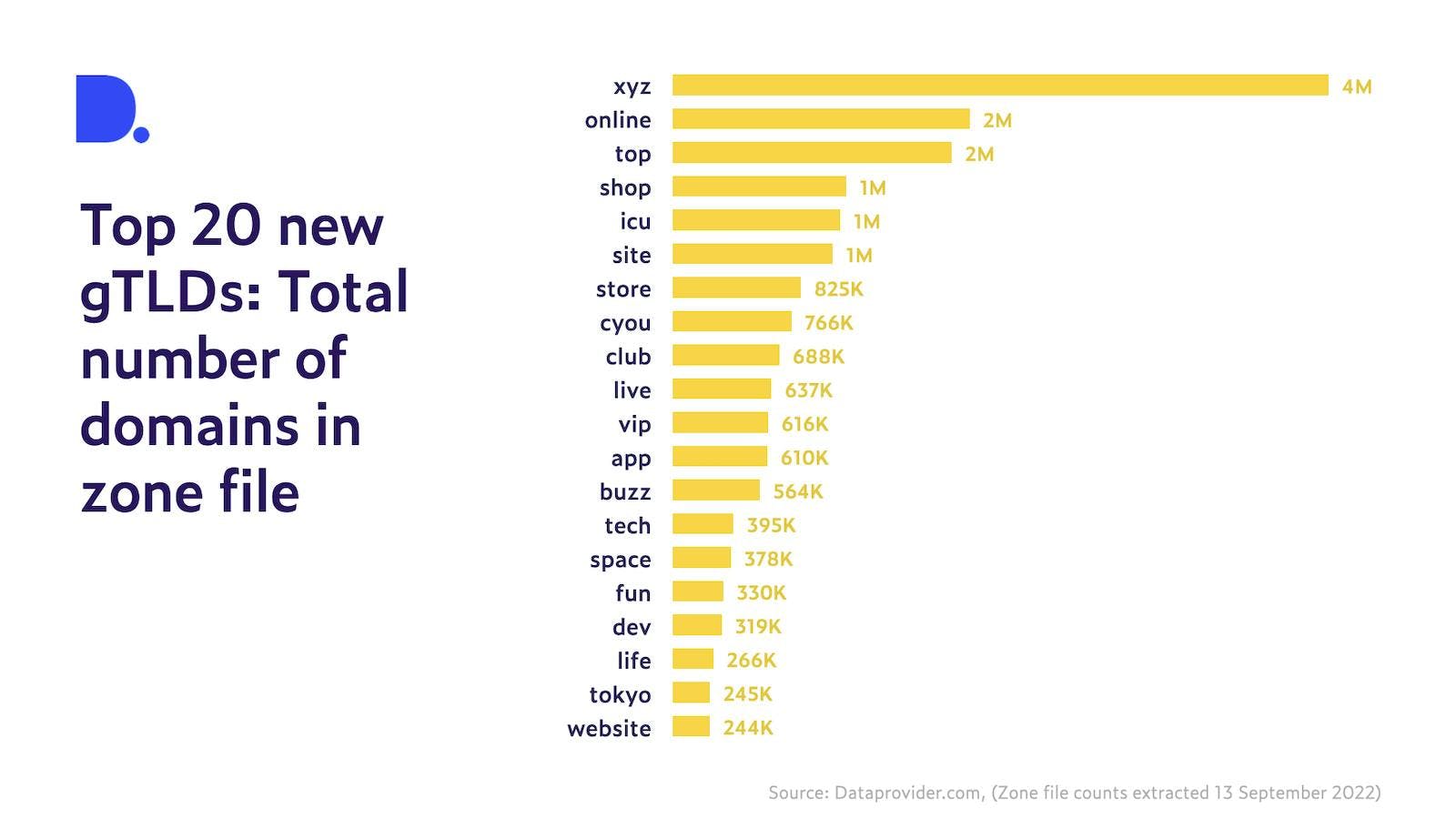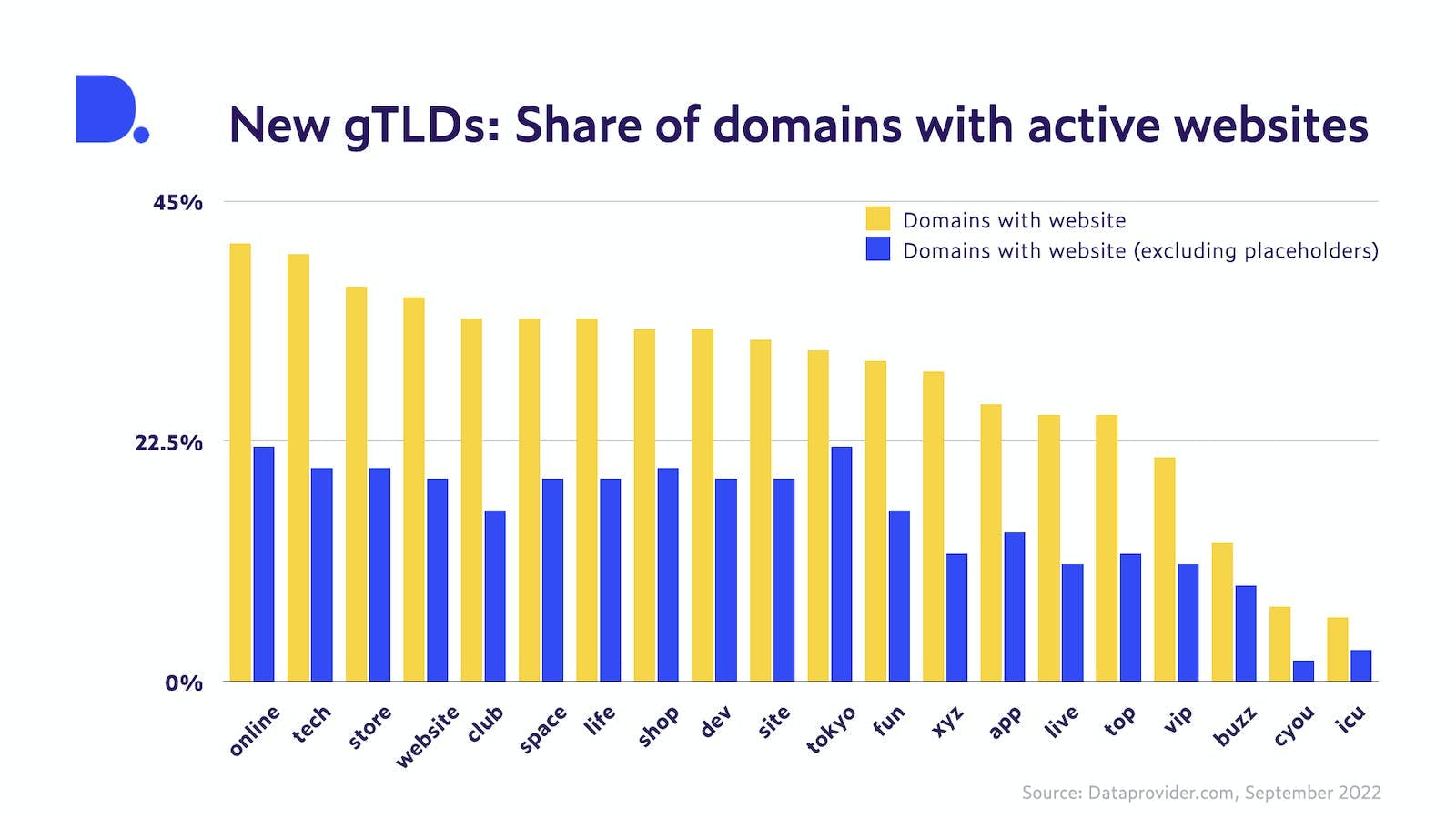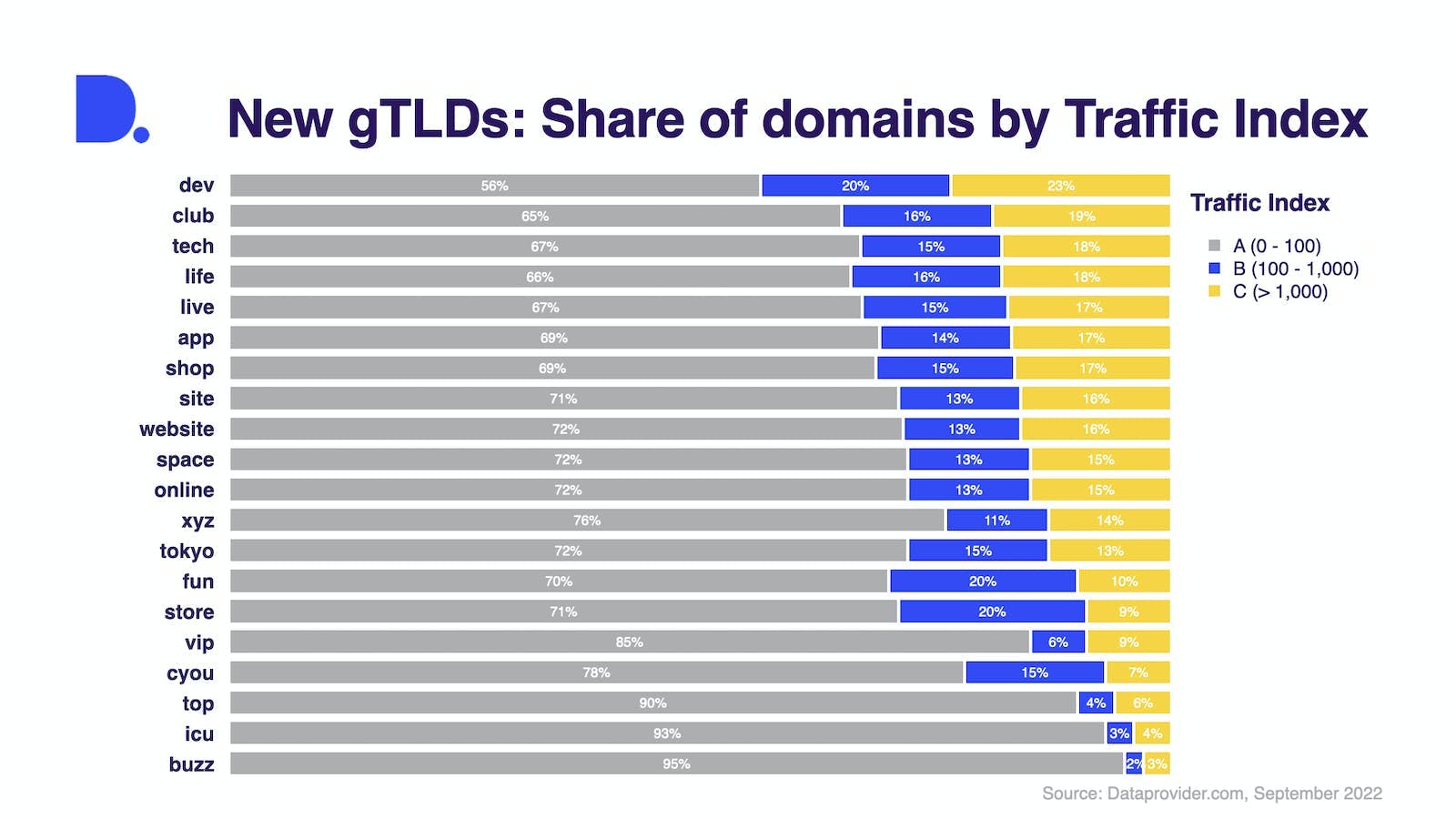Beyond registration numbers: how popular are new generic TLDs?
- almost 3 years ago
- 3 min read
How are new gTLDs used and how much traffic do they attract? We dived into our data and made some interesting discoveries.
In 2012 the Internet Corporation for Assigned Names and Numbers (ICANN) launched a program for new generic top-level domains (new gTLDs) to expand the domain name system. TLDs are a crucial part of a web address and represent the letters behind the domain name and dot.
TLD with no country is a Generic TLD
A TLD that doesn’t refer to a country or a territory is known as a generic TLD (gTLD), examples are .com, .net and .org. But to boost innovation, competition, and consumer choice, new gTLDs have been introduced. Since the inception of the program, over 1,200 new gTLDs have been created: some of the more recent additions include .kids, .music or .spa.
But, how popular are these new gTLDs, and how are they being used? To address these questions, we first look at the ones that have the highest number of domains registered in the respective zone files. Scoring first, second and third are .xyz, .online and .top.

Looking at active domains
However, looking solely at the total number of domains listed in the zone file doesn’t reveal whether the domain is actually associated with an active webpage. When we look at the percentage of domains that are associated with an active website, we see that among the largest new gTLDs, .online, .tech and .store are scoring highest with respectively 41%, 40% and 37% of domains directing to an active website.
Going one step further, if we now exclude pages such as placeholders and parked domains, another reshuffle happens: while .online and .store remain in the top three, .tokyo comes into second place with 22% of domains pointing to an active website that likely represents a site with individualized content or a business site. At the bottom of the range of the 20 largest new gTLDs are .buzz, .icu and .cyou. These new gTLDs have less than 13% of domains associated with an accessible webpage. At the very bottom, only 2% of domains listed in the .cyou zone file direct to a webpage that is active and not a placeholder.

Because active websites alone still say little about how often these sites are accessed, we went one step further and looked at our proprietary Traffic Index measure. The Traffic Index is an index where we compare the traffic of a website to the traffic to www.google.com. Below, we show the share of domains that received little or no traffic (A), moderate traffic (B) and high traffic (C).

Here we see that .dev, .club and .tech are the new gTLDs with the highest share of domains that are frequently visited. Ecommerce associated new gTLDs such as .store and .shop also show a relatively high percentage of domains with moderate and high Traffic Index. As expected from the results above, .icu and .buzz have the lowest share of domains with moderate and high traffic.
The quantity of new gTLD registrations doesn’t necessarily translate to the number of active websites. To get a true understanding of how they're used and how popular they are, additional factors should be considered.
Taken together, our analysis of the top 20 new gTLDs based on the number of domains registered in the respective zone file has shown that the quantity of registrations doesn’t necessarily translate to the number of active websites. To get a true understanding of how these new gTLDs are used and how popular they are, additional factors should be considered. If the goal of these new gTLDs is to increase innovation and competition, a better understanding of the type of website associated with a certain new gTLD as well as the traffic that these domains attract can help to measure the true impact of these new additions.